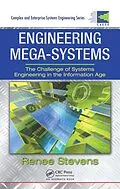With their ability to cross traditional boundaries and achieve a level of functionality greater than their component elements, mega-systems have helped corporations and government organizations around the world resolve complex challenges that they otherwise couldn't address with stand-alone systems. Engineering Mega-Systems: The Challenge of System
Autorentext
Renee G. Stevens is a Senior Principal Engineer at The MITRE Corporation. She has 30 years of experience in the analysis, engineering, and acquisition of large-scale systems for the U.S. Department of Defense and other government agencies. Her current interests lie in research and practice contributing to the development of an enterprise systems engineering discipline.
Stevens has developed the well-received Profiler tool for use in characterizing the environment and context in which a system will be developed and will operate. It serves as both a diagnostic tool and the basis for a situational model. Results have been widely briefed to government, academic, and professional audiences. She is applying the model to the assessment of several large-scale programs and is conducting research on innovative strategies and practices to improve the acquisition of information technology systems.
Stevens received her bachelor's degree in political science from Hunter College, City University of New York, in 1966, and a master's degree in public and business administration from George Washington University in 1981. She is a member of the Institute of Electrical and Electronic Engineers and the Academy of Management.
Inhalt
Setting the Stage. List of Acronyms. Introduction. Context and Trends. Concepts and Frameworks. Mega-System Concepts. A Framework for Exploring Mega-Systems. Engineering and Acquiring Mega-Systems. Case Studies in Engineering Mega-Systems. Introduction to Mega-System Case Studies. Single Integrated Air Picture. Developing the Electronic Product Code Network. Observations from the Case Studies. The Way Ahead. Profiling A Complex Acquisition Program.
